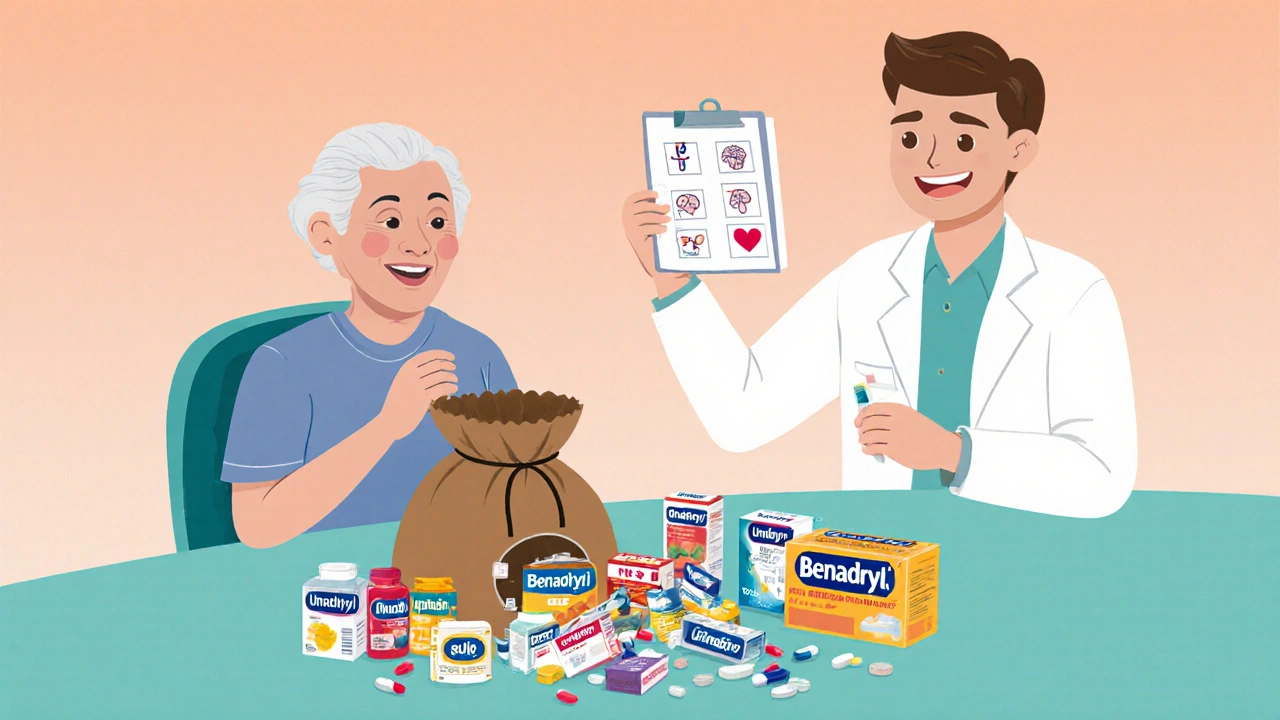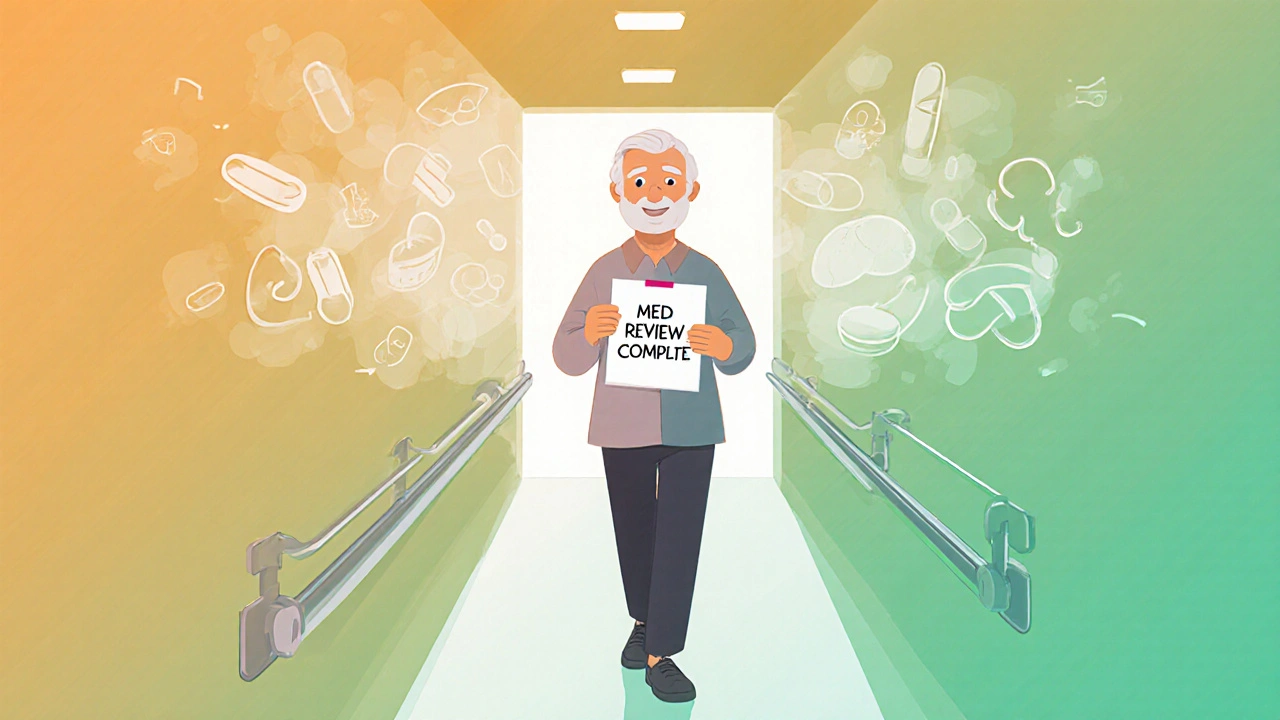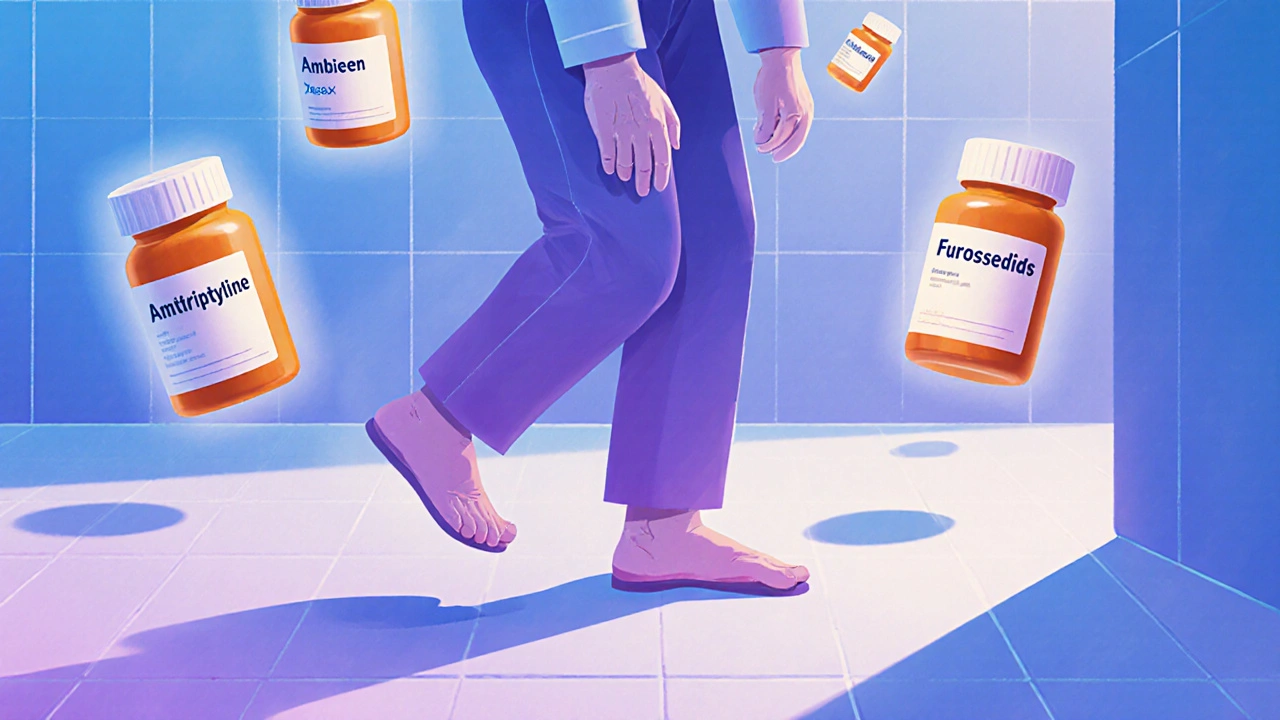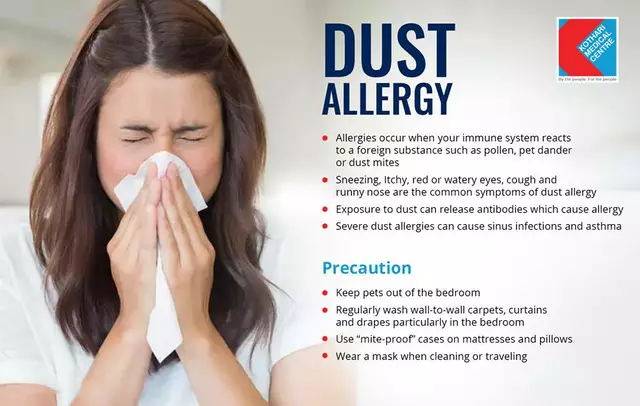Fall Risk Medication Checker
How This Tool Works
This tool helps identify medications that increase fall risk for older adults. Based on CDC and Mayo Clinic research, certain drugs can cause dizziness, confusion, and unsteadiness. Enter the medications you or a loved one is taking to assess risk level.
Select Your Medications
Select all medications you take that appear in the list below. Most fall-risk medications are highlighted with High Risk or Moderate Risk
Every year, more than 36,000 older adults in the U.S. die from falls. Many of these deaths aren’t just accidents-they’re linked to medications that many people don’t realize are dangerous for balance and coordination. If you or a loved one is over 65 and taking more than a few prescriptions, you’re at higher risk than you might think. The problem isn’t always the illness being treated. It’s often the drugs meant to treat it.
Why Medications Make Falls More Likely
Falls in older adults aren’t just about weak legs or slippery floors. They’re often triggered by drugs that slow down the brain, lower blood pressure too much, or make you drowsy-even during the day. The body changes as we age. Liver and kidney function slow down. This means medications stay in the system longer, building up to levels that can cause dizziness, confusion, or unsteadiness. What was a safe dose at 50 might be dangerous at 75.Research from the Mayo Clinic shows that 30% to 40% of adults over 65 fall at least once a year. And here’s the key part: 65% to 93% of those who get injured in a fall were taking at least one medication known to increase fall risk. That’s not a coincidence. It’s a pattern.
Top Medications That Increase Fall Risk
Not all drugs carry the same danger. Some are far more likely to cause falls than others. Here are the nine main classes of medications linked to higher fall risk, ranked by how strongly they’re connected to injuries:- Antidepressants - These have the strongest link to falls, especially tricyclics (like amitriptyline) and even SSRIs (like sertraline). They affect balance by altering brain chemicals that control movement and posture.
- Benzodiazepines - Drugs like Xanax, Valium, and Ativan are prescribed for anxiety and sleep. But long-term use (beyond two weeks) raises fall risk by 50%. They cause drowsiness, slow reaction time, and impair judgment-even the next morning.
- Sedative-hypnotics - Ambien, Lunesta, and Sonata are marketed as “non-addictive” sleep aids. But they can cause sleepwalking, confusion, and unsteadiness upon waking. The CDC calls them “particularly dangerous” because people don’t always feel fully awake after taking them.
- Opioids - Painkillers like oxycodone and hydrocodone increase fall risk by up to 80% at high doses. They cause dizziness, slowed thinking, and low blood pressure. Even short-term use after surgery can be risky.
- Antipsychotics - Used for dementia-related agitation, these drugs (like haloperidol and risperidone) increase fall risk by 40%. First-generation versions are especially dangerous because they cause muscle stiffness and tremors.
- Muscle relaxants - Baclofen is the worst offender, linked to a 70% higher fall risk. Others like cyclobenzaprine and methocarbamol also cause drowsiness and poor coordination.
- Diuretics - Water pills like furosemide help with swelling and high blood pressure, but they can cause sudden drops in blood pressure when standing up, leading to lightheadedness and falls.
- Antihypertensives - Blood pressure meds, especially when taken in combination, can cause orthostatic hypotension-when your blood pressure plummets after standing. This is one of the most common causes of falls in older adults.
- NSAIDs - Ibuprofen and naproxen may seem harmless, but they can raise blood pressure and interfere with kidney function, indirectly increasing fall risk by about 25%.
What About Over-the-Counter Drugs?
Many people don’t think of OTC meds as dangerous. But they’re often the hidden culprit. Antihistamines in allergy pills like diphenhydramine (Benadryl) and doxylamine (Unisom) are strong anticholinergics. They cause dry mouth, blurred vision, confusion, and drowsiness-all of which wreck balance. A 2022 study found that 65% of older adults didn’t know their allergy or sleep meds could make them fall.Even herbal supplements like melatonin or valerian root can interact with prescription drugs and amplify drowsiness. If you’re taking anything-prescription, OTC, or herbal-you need to talk about it with your doctor.

Who’s Most at Risk?
It’s not just about taking one risky drug. It’s about taking multiple. The average older adult takes 4.3 prescriptions. Nearly half take five or more. When you stack drugs that all cause drowsiness or lower blood pressure, the risk multiplies.People with dementia, Parkinson’s, or diabetes are especially vulnerable. But even otherwise healthy seniors are at risk if they’re on long-term benzodiazepines or antidepressants. The danger isn’t always obvious. Someone might feel fine in the morning-until they stand up too fast or turn around quickly.
Real Stories, Real Consequences
On Reddit, a caregiver named Jane wrote: “My 78-year-old mom fell three times in two months after starting Ambien. The third time, she broke her hip. The doctor said it was likely the sleep med.”On GoodRx, a 72-year-old man shared: “I took Xanax for six months for anxiety. I didn’t realize I was so unsteady until I started installing grab bars in my bathroom. I didn’t fall, but I knew I was one step away.”
The CDC’s 2022 survey found that 28% of older adults who fell blamed their meds-but only 15% told their doctor about it. Why? Many think side effects are just “part of getting older.” They’re not.

What Can You Do?
The good news? Many of these risks can be reduced-or eliminated-with the right steps.- Ask for a full medication review-at least once a year. Bring every pill, supplement, and OTC drug to your appointment. Use the “brown bag method”: dump everything out on the table and let your doctor or pharmacist check it.
- Ask if any meds can be stopped. The CDC’s STEADI program recommends: STOP unnecessary drugs, SWITCH to safer alternatives, and REDUCE doses to the lowest effective level.
- Replace sleep meds with CBT-I. Cognitive Behavioral Therapy for Insomnia is more effective than Ambien or Lunesta, with no fall risk. It’s covered by Medicare in many cases.
- Ask about non-benzodiazepine anxiety treatments. Newer antidepressants like buspirone or SSRIs with lower sedation risk may be safer than long-term benzodiazepines.
- Work with a pharmacist. Pharmacist-led reviews reduce fall risk by 22%. They catch interactions doctors miss.
- Monitor for dizziness. If you feel lightheaded when standing, tell your doctor. It’s not normal. It’s a warning sign.
What’s Changing in 2025?
Healthcare is starting to catch up. Medicare now penalizes doctors who prescribe too many high-risk drugs to older patients. AI tools are being tested to scan medication lists and flag dangerous combinations with 89% accuracy. The American Geriatrics Society’s 2024 Beers Criteria update will include new warnings for recently approved drugs.And there’s new hope: the National Institute on Aging just funded $15 million to study how to safely wean older adults off fall-risk meds. The goal? Prevent 24% of all falls-saving billions and, more importantly, keeping people independent longer.
Don’t Assume It’s Just Aging
Falls aren’t inevitable. Neither are the injuries they cause. Many older adults live active, independent lives well into their 80s and 90s-not because they’re lucky, but because they and their doctors made smart choices about medications.If you’re taking any of these drugs, don’t stop them on your own. But do ask: “Is this still necessary? Is there a safer option? Could I take less?” That one conversation could prevent a hospital visit, a broken hip, or worse.
Which medications are most likely to cause falls in older adults?
Antidepressants, benzodiazepines (like Xanax and Valium), sedative-hypnotics (like Ambien), and opioids carry the highest risk. Antidepressants have the strongest link to falls, followed closely by benzodiazepines and sleep aids. Muscle relaxants like baclofen and anticholinergics in OTC allergy meds also significantly increase fall risk.
Can over-the-counter drugs cause falls too?
Yes. Antihistamines like diphenhydramine (Benadryl) and doxylamine (Unisom) are strong anticholinergics that cause drowsiness, blurred vision, and confusion. Even melatonin and herbal sleep aids can interact with prescription drugs and increase dizziness. Many older adults don’t realize these OTC meds are risky.
How many older adults are taking fall-risk medications?
About 45% of adults over 65 in the U.S. are taking at least one medication classified as “potentially inappropriate” for older adults, according to JAMA Health Forum’s 2023 analysis. Nearly 90% take at least one prescription, and over 40% take five or more drugs-making dangerous interactions common.
What should I do if I think a medication is making me unsteady?
Don’t stop the medication on your own. Make an appointment with your doctor or pharmacist. Bring all your medications in a brown bag. Ask: “Could this be causing my dizziness?” “Is there a safer alternative?” “Can I reduce the dose?” Most fall-risk drugs can be replaced or tapered safely with professional guidance.
Are there non-drug alternatives for sleep or anxiety?
Yes. For insomnia, Cognitive Behavioral Therapy for Insomnia (CBT-I) is more effective than sleep meds and has zero fall risk. For anxiety, talk therapy, mindfulness, and exercise can be as effective as benzodiazepines without the drowsiness. Many Medicare plans now cover CBT-I and behavioral health services.
How often should older adults review their medications?
At least once a year, and more often after a hospital stay, new diagnosis, or fall. The CDC’s STEADI program recommends annual medication reviews for everyone over 65. If you’re on five or more drugs, consider a review every 6 months. Pharmacists can help with these reviews-and they’re often covered by insurance.







steffi walsh
November 17, 2025 AT 11:32